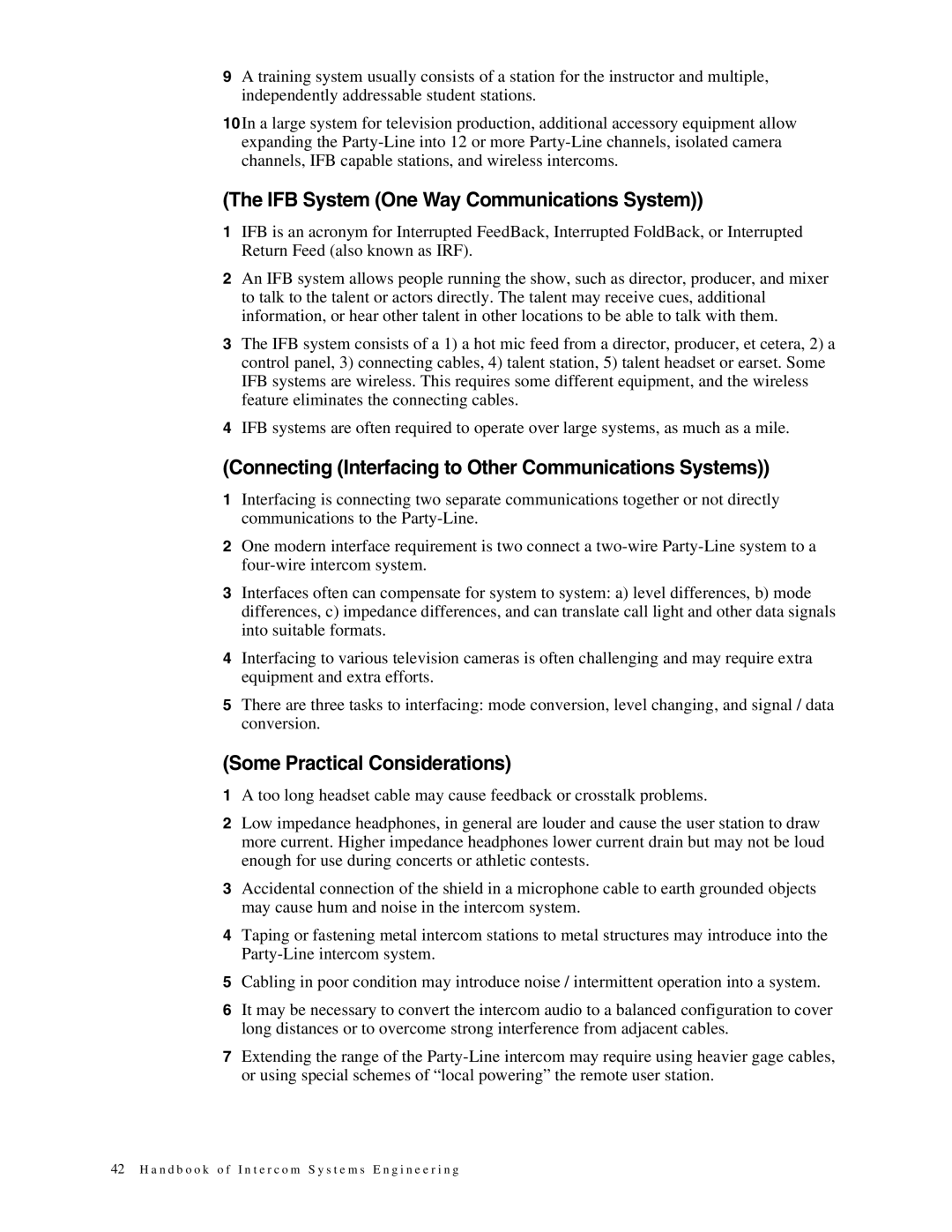9A training system usually consists of a station for the instructor and multiple, independently addressable student stations.
10In a large system for television production, additional accessory equipment allow expanding the
(The IFB System (One Way Communications System))
1IFB is an acronym for Interrupted FeedBack, Interrupted FoldBack, or Interrupted Return Feed (also known as IRF).
2An IFB system allows people running the show, such as director, producer, and mixer to talk to the talent or actors directly. The talent may receive cues, additional information, or hear other talent in other locations to be able to talk with them.
3The IFB system consists of a 1) a hot mic feed from a director, producer, et cetera, 2) a control panel, 3) connecting cables, 4) talent station, 5) talent headset or earset. Some IFB systems are wireless. This requires some different equipment, and the wireless feature eliminates the connecting cables.
4IFB systems are often required to operate over large systems, as much as a mile.
(Connecting (Interfacing to Other Communications Systems))
1Interfacing is connecting two separate communications together or not directly communications to the
2One modern interface requirement is two connect a
3Interfaces often can compensate for system to system: a) level differences, b) mode differences, c) impedance differences, and can translate call light and other data signals into suitable formats.
4Interfacing to various television cameras is often challenging and may require extra equipment and extra efforts.
5There are three tasks to interfacing: mode conversion, level changing, and signal / data conversion.
(Some Practical Considerations)
1A too long headset cable may cause feedback or crosstalk problems.
2Low impedance headphones, in general are louder and cause the user station to draw more current. Higher impedance headphones lower current drain but may not be loud enough for use during concerts or athletic contests.
3Accidental connection of the shield in a microphone cable to earth grounded objects may cause hum and noise in the intercom system.
4Taping or fastening metal intercom stations to metal structures may introduce into the
5Cabling in poor condition may introduce noise / intermittent operation into a system.
6It may be necessary to convert the intercom audio to a balanced configuration to cover long distances or to overcome strong interference from adjacent cables.
7Extending the range of the
42 H a n d b o o k o f I n t e r c o m S y s t e m s E n g i n e e r i n g
